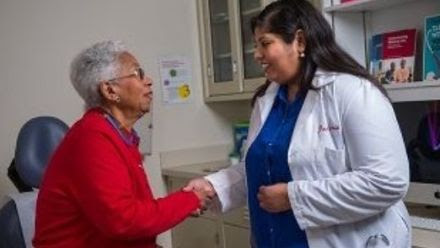|
|||
|
|||
|
|||
|
Isn’t it past time to reduce screen time for kids and grownups? |
 |
|
With the weather turning warm and sunny and the coronavirus pandemic seemingly diminishing fast, it may be time for all of us — especially the kids — to roll back our reliance on electronic devices and slash our screen time. Was it a century or a nanosecond ago that parents, teachers, pediatricians, and others were campaigning against youngsters planting themselves in front of e-screens, with warnings about how obsessive consumption of online content might harm the young for a lifetime? The pandemic, of course, forced a retreat from attempts to cut down on sedentary, passive viewing of various kinds of content on laptops, e-tablets, and smartphones. The restrictions once targeted grownups, too, aiming to get them to get more restful sleep by shutting down that blue electronic light for a healthy period before bedtime. Since then, due to public health measures aimed at reducing the coronavirus’ harms, untold numbers of adults have toiled at their jobs from home for long hours online, while youngsters have adapted to remote learning for their school days. Typical households have thronged top to bottom to video conferencing applications and social media to maintain relationships with colleagues, friends, and loved ones. The seemingly unlimited access must be eased back, the New York Times reported, or, as Keith Humphreys, a professor of psychology at Stanford University, an addiction expert and a former senior adviser to President Barack Obama on drug policy, has observed: “There will be a period of epic withdrawal.” How will we all re-learn to have appropriate, productive in-person contacts once the screens get switched off? Slowly, experts say. As a Washington Post parenting columnist wrote: “One of the biggest mistakes that parents make around screens is that we want to dole out commands and demands on the spot, and we expect our children to happily acquiesce. However, we need a proactive meeting that creates workable goals for our children. This meeting is done at a time that is calm and when all parties can have a say. The younger the children, the more the parent will need to decide, but you still need to be proactive, so you know what you’re sticking with. And remember: Just because you call one meeting to make plans doesn’t mean anything is set in stone. Staying proactive means revisiting the goals you have set for yourself and your family, without judgment or blame. “Next, you have to be logical about lessening screen time. Going from all screens, all the time to total lockdown will be met with fierce blowback, so you have to be reasonable about what your family can handle. You may want to go cold turkey on all the screens, and if you believe your family can handle that? Go for it! That would be logical for your family. Other families may need to create rules that slow down the video games and social media but that allow for movies and shows. The point is that ‘logical’ is based on your family and their needs. There are plenty of websites and online resources (ironically) to help you assess what is logical for your children, as well as a plethora of books. Choose one or two resources, see how they feel for you and go from there.” Dr. Eric Li, a child and adolescent psychiatry fellow at Children’s Hospital of Philadelphia, recommends that new guidelines for kids and their screen time hit on key points. They should prevent device use from interrupting sleep, meals, or family time. Youngsters should be offered alternatives, including getting out of the house for activities and exercise, potentially with face coverings on for now, unless they are old enough to get vaccinated. (The New York Times consulted with hundreds of experts on what activities are safe for unvaccinated kids). Li says adults need to ensure that kids do not multi-task, trying to watch screens while taking on secondary activities — this isn’t good for the cognitive health of the young or adults either, experts say. Kids also need to learn to curb their concerns about FOMO — fear of missing out on important online activities. Adults also must keep watch to ensure that youngsters aren’t getting bullied or taking in inappropriate material online. (It’s important, of course, to distinguish kids’ online consumption, say, of school work versus violent video games …) Speaking of grownups, it’s unclear for now how many will give up their screen-reliant work lives and how soon they will return to IRL (in real life) workplaces. They still may want to “digital detox” themselves, slowly weaning themselves from devices and screens, boosting the depth and quality of their sleep, and reducing potential cognitive harms from excessive time spent online. It is helpful in the whole process, of course, that the current White House does not seem as focused as the previous administration in creating a crisis of some kind by the hour, and that the grim and uncertain information about the pandemic has turned more certain and positive. If you’re fully vaccinated, shut off the screens, get outdoors, and catch up with people you like — in person. |
Healing touch is still key, prominent doctors say |
 |
|
Doctors and patients cannot allow new technology to interfere with safe, excellent, and affordable medical care, prominent practitioners have long warned. Surrounded by beeping, flashing, and demanding equipment, physicians still must maintain a human presence, using their five senses and state-of-the-art devices to provide quality diagnosis and treatment, experts like Dr. Abraham Verghese of Stanford medical school say. He argued in a much-read interview: “[I]n this marvelous age, with all the wonderful advances that we have seen, there is a slight danger that our attention [as doctors] is subtly shifting from the human being in front of us to the representation of the human being on the screen … I call that entity the iPatient, like the iPhone or iPad. The iPatient gets wonderful care, but the human being often is in desperate need of a human connection. This is a way of reminding myself that all our tremendous science has to be delivered through the mechanism of one individual to another.” Verghese and his university colleagues have pushed the “Stanford 25,” in which they “teach and promote bedside exam skills to students, residents, and health care professionals both in person and online.” They say that the application of these fundamentals and more can improve care and maintain a crucial element of trust between doctors and patients. He wrote a New York Times Op-Ed about a doctor’s touch and how it seemingly gets supplanted by advanced imaging exams or CT scans: “The consequence of losing both faith and skill in examining the body is that we miss simple things, and we order more tests and subject people to the dangers of radiation unnecessarily. Just a few weeks ago, I heard of a patient who arrived in an ER in extremis with seizures and breathing difficulties. After being stabilized and put on a breathing machine, she was taken for a CT scan of the chest, to rule out blood clots to the lung; but when the radiologist looked at the results, she turned out to have tumors in both breasts, along with the secondary spread of cancer all over the body. In retrospect, though, her cancer should have been discovered long before the radiologist found it; before the emergency, the patient had been seen several times and at different places, for symptoms that were probably related to the cancer. I got to see the CT scan: the tumor masses in each breast were likely visible to the naked eye and certainly to the hand. Yet they had never been noted.” Doctors who put patients at the forefront of their practices are not Luddites, and they do see important roles for technological advances in medicine, according to Verghese and others. They include Drs. Eric Topol of the Scripps Institute, Christopher Maiona, chief medical officer of the software firm PatientKeeper, and Caesar Djavaherian, an emergency medicine specialist and co-founder and chief medical officer at Carbon Health. But the experts say they see colleagues, particularly younger doctors, sucked into spending excessive time, for example, putting their heads down and typing clinical notes into laptops, or turning their backs on patients to look at monitors. Doctors, accustomed now to ordering barrages of tests and screens, may forget how a patient odor may suggest serious infection, a particular breath sound can be a grave warning, or the appearance of an individual’s hands may offer clues to alcohol abuse and liver damage. Verghese, who also is an author and New Yorker writer, told Topol prophetically a half-dozen years ago this about telemedicine — and it still holds: “Do I think that there are a lot of visits where we can spare the patient the hassle of parking and climbing up to the clinic? Certainly, many things can be transacted not just on telemedicine, but also with the wonderful team we have of nurse practitioners and physician assistants. I am a big believer in that, and often they do the very things that we don’t do, which is listen and touch and spend time. For many patients, however, there will be a moment in the trajectory of the illness where a face-to-face visit will be performed and be of importance.” |
Recent Health Care Blog Posts |
|
Here are some recent posts on our patient safety blog that might interest you:
|
|
HERE’S TO A HEALTHY 2021!
|
|
Sincerely,
Patrick Malone |




